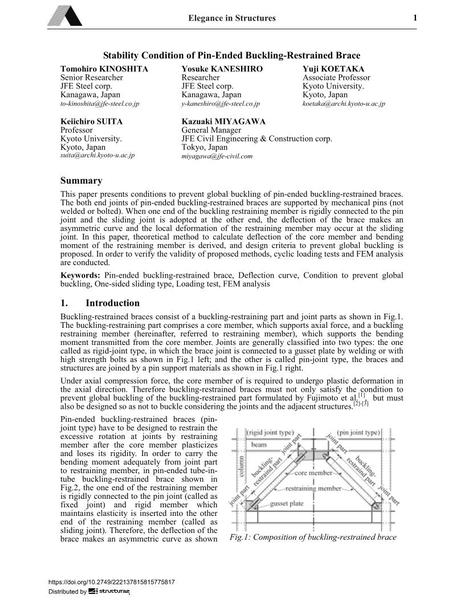Stability Condition of Pin-Ended Buckling-Restrained Brace

|
|
|||||||||||
Bibliographic Details
| Author(s): |
Tomohiro Kinoshita
Yosuke Kaneshiro Yuji Koetaka Keiichiro Suita Kazuaki Miyagawa |
||||
|---|---|---|---|---|---|
| Medium: | conference paper | ||||
| Language(s): | English | ||||
| Conference: | IABSE Conference: Elegance in structures, Nara, Japan, 13-15 May 2015 | ||||
| Published in: | IABSE Conference Nara 2015 | ||||
|
|||||
| Page(s): | 462-463 | ||||
| Total no. of pages: | 8 | ||||
| Year: | 2015 | ||||
| DOI: | 10.2749/222137815815775817 | ||||
| Abstract: |
This paper presents conditions to prevent global buckling of pin-ended buckling-restrained braces. The both end joints of pin-ended buckling-restrained braces are supported by mechanical pins (not welded or bolted). When one end of the buckling restraining member is rigidly connected to the pin joint and the sliding joint is adopted at the other end, the deflection of the brace makes an asymmetric curve and the local deformation of the restraining member may occur at the sliding joint. In this paper, theoretical method to calculate deflection of the core member and bending moment of the restraining member is derived, and design criteria to prevent global buckling is proposed. In order to verify the validity of proposed methods, cyclic loading tests and FEM analysis are conducted. |
||||
| Keywords: |
loading test FEM analysis Pin-ended buckling-restrained brace Deflection curve condition to prevent global buckling One-sided sliding type
|
||||
